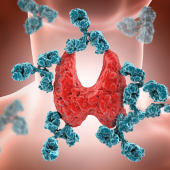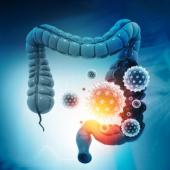Palmitoylethanolamide (PEA) has emerged as an important agent for the management of a wide array of conditions characterized by pain. While several dozen human trials exist to this effect, a recent meta-analysis focused on 11 such trials concluding that PEA is indeed effective at reducing pain (1).
PEA acts through endocannabinoid receptors, which are broadly distributed throughout the body. PEA’s net effect is powerfully anti-inflammatory (2). Given the broad distribution of endocannabinoid receptors, and the powerful anti-inflammatory action achieved through PEA administration, it is not unreasonable to assume PEA will deliver value in situations other than pain.
A recent study included both an in vitro component as well as a randomized double-blind placebo controlled human trial to assess the impact of PEA on gut hyperpermeability (3). Exposing human colonocytes to PEA in vitro led to expected observation of anti-inflammatory impact.
The human trial enrolled 30 healthy males and used participants as their own controls. Participants were administered 600 mg of aspirin (to induce leaky gut) and 600 mg of PEA for control, followed by 1 g each of mannitol and lactulose one hour later. Aspirin plus control resulted in significant increases in urinary lactulose and mannitol. Maximal excretion occurred two hours after administration of the two sugars (3).
Assessment of mannitol in urine standardizes the test, as mannitol is absorbed in the small intestine, and passes into urine. Lactulose, being a significantly larger sugar, is not absorbed through the intestine, yet will make its way into urine in a state of leaky gut. Thus, an increasing lactulose to mannitol ratio exemplifies leaky gut. Previous groups have shown that a single administration of aspirin can increase the lactulose to mannitol ratio 20-fold (3).
Among participants administered aspirin plus PEA, the lactulose to mannitol ratio significantly increased, yet did so to a much lesser magnitude relative to the aspirin plus control condition, and the difference was significant. Urinary lactulose concentration reached 313.4 µg/l at two hours and 290.1 µg/l at three hours in the aspirin plus control condition.
When administered aspirin plus PEA, urinary lactulose concentration reached 108.5 µg/l at two hours and 98.59 µg/l at three hours. The established role of PEA as a broad spectrum, safe analgesic is welcome in the fight against chronic pain. However, the widespread distribution of endocannabinoid receptors suggests applications for PEA are likely to far exceed use solely for pain.
The human trial reviewed above provides strong support for a role of PEA in managing inflammatory bowel disease and many other situations in which leaky gut is a contributing factor.
References
- Lang-Illievich K, Klivinyi C, Lasser C, Brenna CTA, Szilagyi IS, Bornemann-Cimenti H. Palmitoylethanolamide in the Treatment of Chronic Pain: A Systematic Review and Meta-Analysis of Double-Blind Randomized Controlled Trials. Nutrients. 2023 Mar 10;15(6):1350.
- Rankin L, Fowler CJ. The Basal Pharmacology of Palmitoylethanolamide. Int J Mol Sci. 2020 Oct 26;21(21):7942.
- Couch DG, Cook H, Ortori C, Barrett D, Lund JN, O’Sullivan SE. Palmitoylethanolamide and Cannabidiol Prevent Inflammation-induced Hyperpermeability of the Human Gut In Vitro and In Vivo-A Randomized, Placebo-controlled, Double-blind Controlled Trial. Inflamm Bowel Dis. 2019 May 4;25(6):1006-1018.
==
The opinions expressed in this blog are those of the guests and contributors. They do not necessarily reflect the opinions of Nutritional Fundamentals For Health Inc.
This blog is intended for licensed or registered health professionals and students of health professions only. These statements have not been evaluated by the Food and Drug Administration. Information contained in these programs is not intended to diagnose, treat, cure, or prevent any disease.



